More to Discover
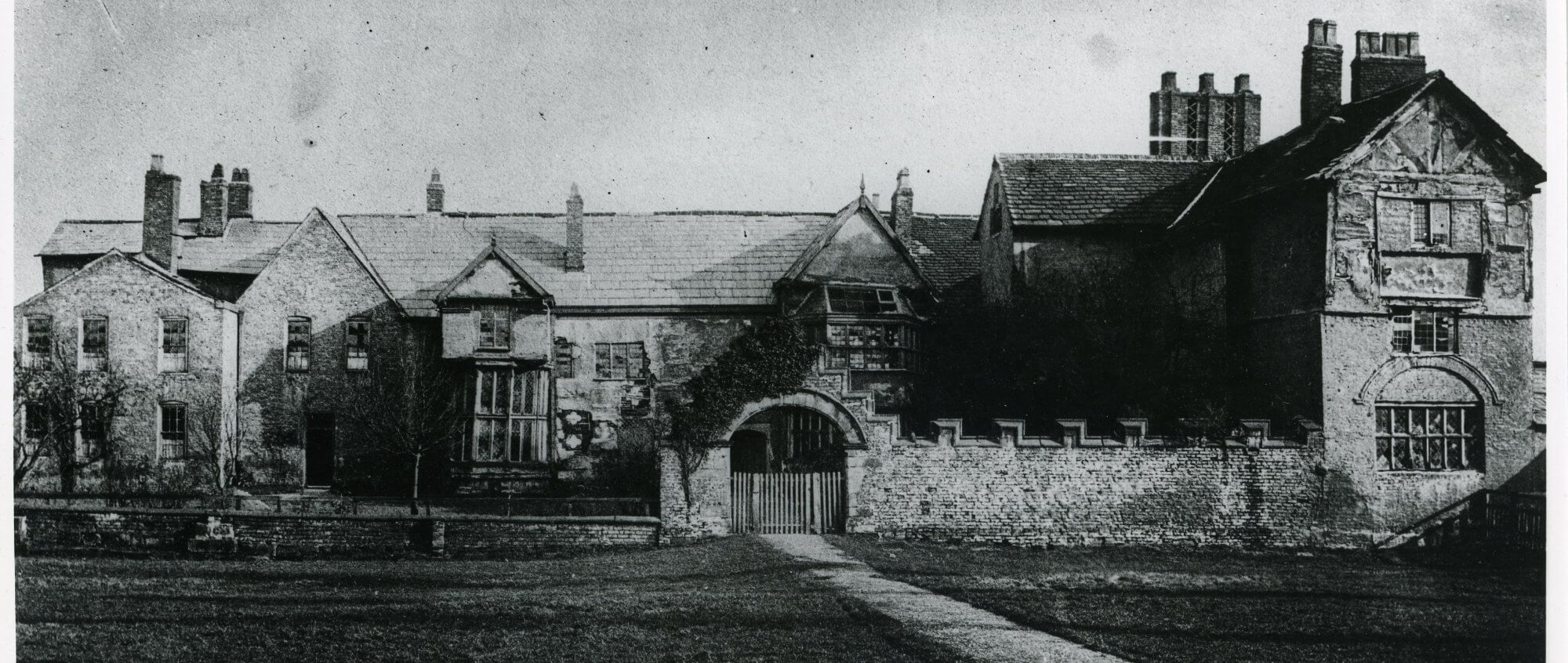
Ordsall Hall has had a long and interesting history with many different uses since it was first mentioned in records in 1177! Today, it is a welcoming and friendly historic house telling the story of the Hall and some of the people who made it their home.
Discover the fascinating history of this impressive building.
The name Ordsall has Old English origins being the personal name ‘Ord’ and the word ‘halh’, meaning a corner or nook, which has become the modern dialect word ‘haugh’. This, indeed, describes the position of the manor for its boundary on the south side is a large bend in the River Irwell which later became the site of the docks for the Manchester Ship Canal.
The name first appears in print in 1177 when ‘Ordeshala’ paid two marks towards an aid, a feudal due or tax. There was probably a house at Ordsall by 1251 when William de Ferrers, Earl of Derby, exchanged the manor for land in Pendleton which belonged to David de Hulton.
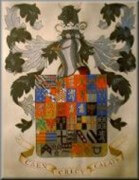 Manor passed to the Radclyffe family
Manor passed to the Radclyffe familyThe manor passed into the hands of the Radclyffe family of Radclyffe Tower, near Bury, about 1335 on the death of the childless Richard de Hulton. The first 20 years of Radclyffe ownership were very confused because there were several claimants, but in 1354 Sir John Radclyffe finally established his right to inherit the manor on his return from the French wars. During these he was granted the right to use one of the earliest mottoes for services in the battlefield. ‘Caen, Crecy, Calais’. Sir John inherited a manor described in 1351 as a messuage, 120 acres of land, 12 acres of meadow and 12 acres of wood.
Ten years later he had enlarged his house which included a new chapel for which he received a license in 1361. When his son Richard died in 1380 the Hall was described as having a hall, five chambers, a kitchen and a chapel. It was associated with two stables, three granges, two shippons, a garner, a dovecote, an orchard and a windmill, together with 80 acres of arable land and six acres of meadow.
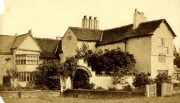 Sir Alexander Radclyffe becomes High Sheriff of Lancashire
Sir Alexander Radclyffe becomes High Sheriff of LancashireThe current Great Hall was built in 1512 when Sir Alexander Radclyffe (d. 1549) became High Sheriff of Lancashire for the first time. The new Hall was typical of others built at the time in the North West, for example at Rufford Old Hall, and is certainly one of the largest. There is a hexagon on the floor marking the central hearth to heat the Hall. There are also two panels without quatrefoils that were meant to be open to allow smoke out through the roof. The Hall is distinguished by an elaborate roof structure clearly displaying the skills of the carpenter who built it.
Further alterations and additions were made to the Hall in the 1600s. A modest brick house was built in 1639 by Sir Alexander Radclyffe (d. 1654) at the west end and at right angles to the timber framed building which may have been the home of the bailiff since by then Ordsall was no longer his main residence. Later the house was joined to the main building.
Sir Alexander was apparently already in financial difficulties. The expenditure of building the new brick wing followed immediately by the English Civil War during which, as a Royalist, he suffered imprisonment and financial hardship, left his son and heir John in such straitened circumstances that in 1662 he had to sell the Hall to Colonel John Birch.
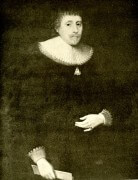 Marriages, knighthoods, positions of influence and connections with court
Marriages, knighthoods, positions of influence and connections with courtThe Radclyffe family had been connected with the Hall for over 300 years and their family history tells of inter-marriages and feuds with other local families such as the Booths, Leghs and de Traffords. Some sat in Parliament as Knights of the Shire, and Sir Alexander (d. 1549) was High Sheriff of Lancashire on five occasions. Most were knighted for services in battle and took part in Court life: for instance, Margaret Radclyffe (d. 1599) became the favourite lady-in-waiting to Queen Elizabeth and was seen at Court in a white dress as a gift from her twin brother Alexander as a symbol of the Queen’s purity. It was said to have cost £180 (which is equal to £31,000 in today’s money!).
At the end of the 1600s the estate was sold to the Oldfield family of Leftwich, near Northwich, and again in 1704 to John Stock, a trustee of Cross Street Chapel. His son’s executors sold the property in 1756 to Samuel Hill of Shenstone, Staffordshire, on whose death two years later it passed to his nephew, Samuel Egerton of Tatton.
The Stocks were almost certainly the last owners to live in Ordsall Hall. The Stocks lived in the central section of the Hall (the two wings were probably occupied by tenants by 1700). The central section of the Hall was described as consisting of ‘a large hall, lounge dining room, a chapel, six rooms on a floor, with brewhouse, large courts, stable, etc’.
It is likely that alterations took place during the early years of Egerton ownership (the late 1700s). The canopy at the dais end of the Great Hall, for instance, was destroyed when a floor was inserted and rooms formed with lath and plaster partitions on both floors. One rib of this canopy can be seen in the north wall of the dais. Probably at the same time, and certainly before the earliest estate map of 1812, the east wing of the hall was demolished.
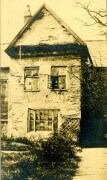 Other residents
Other residentsVarious families of substance continued to occupy the Hall until 1871. In 1870 Joseph Ryder, a cotton merchant, shared the building with Richard Alsop who was innkeeper of the famous ‘Bulls Head’ inn in Manchester for about 12 years from 1770, and later became a cotton manufacturer. The land was occupied for many years by the Mather family who were cowkeepers and butchers. After Richard Alsop’s death in 1814, the lease was taken over by John Markendale whose descendants continued to live in the Hall until 1871. There were well-known locally as butchers and Richard Markendale’s skin and hide business still survives.
Between 1872 and 1875, the artist Frederic Shields (1833-1911) lived in the Hall. He painted in the Pre-Raphaelite style and was friends with John Ruskin. He a letter to Ruskin he described the Hall as “the happiest refuge I have ever nested in.”
The last quarter of the 19th century saw the Hall, once surrounded by fields and woods, engulfed in industrial housing and factories. Its future was uncertain until 1875 when it was let to Haworth’s Mill (a cotton spinning factory on Ordsall Lane) for use as a Working Men’s Club. The Great Hall was cleared of the inserted floor and later partitions and became a gymnasium, while provision was made elsewhere for billiards, a skittle alley and bowling green.
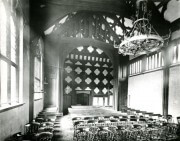 Used as a Clergy Training School
Used as a Clergy Training SchoolWhen the lease ran out, Earl Egerton of Tatton decided to promote the opening of a Clergy Training School in the Hall and to this end he arranged for the Manchester architect, Alfred Darbyshire (1839-1908) to carry out a major restoration at a cost of six thousand pounds. At the same time St Cyprian’s Church (demolished in 1967) was built in the north forecourt and a rectory formed out of the east end of the Hall where a new servants’ wing was added on the south side (demolished in 1962). The clergy school transferred to Egerton Hall in 1908 as Manchester Theological College, but an associated men’s social club survived until 1940 when the building was put to various uses connected with the war effort.
The Hall was purchased by Salford Corporation from the Executors of the Baron Egerton of Tatton in 1959 and, following major restoration work, was finally opened to the public in April 1972 as a period house and local history museum.
The Hall underwent a £6.5 million restoration from 2009 to 2011. This has saved the Hall for future generations.